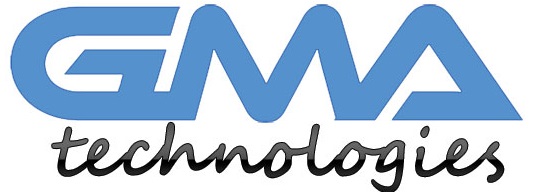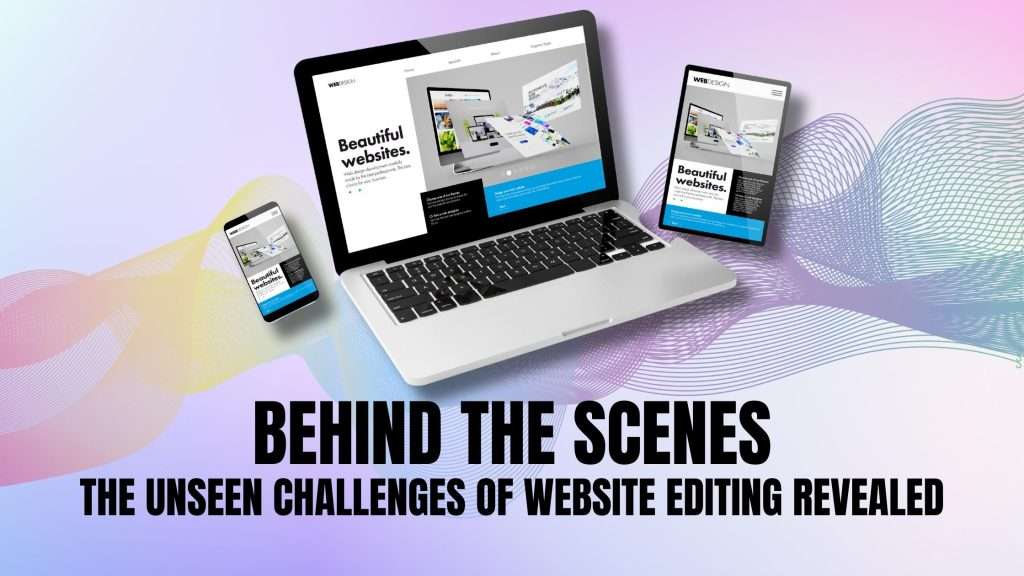Are you curious about what goes on behind the scenes of website editing? Do you ever wonder about the challenges that web editors face every day? Well, get ready to dive into a world of technical difficulties, creative problem-solving, and endless revisions.
In this blog post, we’re lifting the curtain on the unseen challenges of website editing and revealing some insider tips that will help you better understand this complex process. So buckle up and join us as we take a closer look at what it takes to create an engaging and effective online presence.
Introduction: What is a Web Editor?
Web editors are the unseen heroes of the internet. Without them, websites would be a jumble of unorganized text and images. Web editors keep website content organized and up-to-date. They add new content, remove old content, and make sure everything on the site is easy to find.
Web editors usually work in a team with other designers and developers. Together, they plan out how the website will look and work. Once the site is built, it’s up to the web editor to keep it looking good and running smoothly.
Being a web editor is not an easy job. It takes a lot of time and effort to keep a website looking its best. But it’s worth it when you see people using your site and enjoying its content.
The Challenges of Website Editing
Anyone who has ever edited a website knows that it can be a challenge. There are so many things to keep track of, and if you’re not careful, it’s easy to make a mistake that can take hours to fix.
But what most people don’t realize is that there are even more challenges behind the scenes of website editing. Here are just a few of the things that our team has to deal with on a daily basis:
1. Keeping track of changes across multiple files and devices.
When you’re working on a website, you’re usually working with multiple files – HTML, CSS, JavaScript, etc. – all at the same time. And if you’re working on a team, those files might be spread out across multiple computers and devices. Keeping track of all the changes can be a challenge, especially if someone makes a mistake and forgets to save their work.
2. Dealing with broken code and missing images.
Even if everything is working perfectly when you start, there’s always the potential for something to go wrong during the editing process. Code can get broken, images can disappear, and suddenly your website is a mess. Dealing with these problems can be time-consuming and frustrating, but it’s all part of the job.
3. Making sure everything works in all browsers and on all devices.
One of the biggest challenges for any web editor is making sure that their websites look good in all browsers and on all devices. It’s easy to get caught up in making things look perfect in one browser, only to find out it looks terrible in another. Testing for all browsers is essential, as is making sure the website works well on mobile devices.
4. Keeping up with the latest trends and technologies.
The landscape of web design is constantly changing, and it can be a challenge to keep up with the latest trends and technologies. Editors need to stay up-to-date on new coding languages, design tools, content management systems, and more if they want their websites to remain competitive.
Editing websites isn’t always easy, but with the right skills and knowledge, anyone can do it. We hope this post has given you a better understanding of what goes into website editing so you can tackle any challenges that come your way!

– Technical Issues
Technical issues are one of the unseen challenges of website editing. While most website editors are familiar with the basics of HTML and CSS, they may not be aware of the more technical aspects of website editing, such as web server configuration, DNS settings, and domain registration. These technical issues can often be the cause of website problems, such as slow loading times, 404 errors, and broken links. By understanding these technical issues and how to fix them, website editors can keep their websites running smoothly.
– Time Management
Any website editor will tell you that one of the most challenging aspects of the job is managing time. With so many demands on our time and attention, it can be difficult to stay focused and get everything done in a timely manner.
One of the best ways to manage your time as a website editor is to create a schedule and stick to it. Set aside specific times for each task you need to complete, and make sure you allocate enough time for each one. If you find yourself getting behind, don’t be afraid to ask for help or delegate some of your tasks to other members of the team.
It’s also important to take breaks when you feel yourself getting overwhelmed. Step away from your computer and take a few deep breaths; this will help clear your head and allow you to come back to your work with fresh energy. Once you’ve taken a break, try setting a timer for yourself and working in short bursts; this can help you stay focused and avoid burnout.
By following these tips, you can learn to manage your time effectively and keep on top of your workload, even when things get busy.
– Creative Solutions
As a website editor, it is my job to come up with creative solutions to the challenges that my clients face. These challenges can be anything from finding the right words to use on their website to coming up with a design that fits their needs.
One of the most common challenges that I face is helping my clients find the right balance between creativity and professionalism. They want their website to stand out from the rest, but they also don’t want to sacrifice quality or alienate potential customers. It can be a tough line to walk, but I’ve found that the best way to approach it is by thinking about what makes their business unique and then translating that into an eye-catching and user-friendly design.
Another common challenge is working with clients who have very specific ideas about what they want their website to look like. This can be both good and bad – on one hand, it’s great that they know what they want; on the other hand, it can be difficult to convince them to try something new or different. In these cases, I often start by showing them examples of websites that are similar to what they’re envisioning, but that also incorporate some innovative elements. This usually helps them see the potential for something different and allows me to get started on creating a custom solution for their needs.
Balancing Creativity and Constraints
Any website, no matter how creative or innovative, is subject to certain constraints. These can include everything from the need to maintain a consistent branding across all pages to the technical limitations of the platform itself.
As a website editor, it’s my job to balance the creativity of our team with these constraints, ensuring that our visitors have the best possible experience. It’s not always easy, but it’s definitely rewarding.
One of the biggest challenges is maintaining a consistent voice and tone across all of our content. We want our website to sound friendly and approachable, but we also don’t want to sacrifice professionalism. It’s a delicate balance, but one that we take seriously.
Another challenge is ensuring that our pages load quickly and efficiently. We want our site to be as fast as possible, but sometimes that means making sacrifices in terms of design or functionality. It’s always a balancing act, but one that we’re constantly striving to perfect.
Working with Clients and Teams
It can be easy to take website editing for granted. After all, it’s just a matter of adding and removing content, right? WRONG. Website editing is a complex task that requires a keen eye for detail, an understanding of your audience, and the ability to work with clients and teams.
Behind the scenes, website editors are constantly juggling multiple tasks: ensuring the accuracy of content, keeping up with updates and changes, managing deadlines, and dealing with last-minute requests. It’s a lot of pressure, but it’s all worth it when you see the final product.
One of the most challenging aspects of website editing is working with clients and teams. Each client or team has their own specific needs and wants, which can make coordination difficult. However, good communication is essential to ensure that everyone is on the same page.
At the end of the day, website editing is a rewarding job that comes with its fair share of challenges. But those challenges are what make us better at our craft. So next time you’re browsing your favorite website, take a moment to appreciate all the hard work that went into making it look just right.
Dealing with Negative Feedback
No matter how great your website is, you’re bound to receive some negative feedback at some point. It’s important to know how to deal with this feedback in a constructive way.
Here are a few tips for dealing with negative feedback:
Listen to what the person is saying. They may have valid points that you can learn from.
Don’t take it personally. The person is critiquing your website, not you as a person.
Respond politely and professionally. Thank the person for their feedback and let them know that you’ll take it into consideration.
Use the feedback as an opportunity to improve your website. Take what the person said and use it to make your site even better.
Best Practices for Website Editing
Websites are constantly evolving. As new technologies emerge and user expectations change, website editors must adapt their practices to keep up. Here are some best practices for website editing:
- Use an editorial calendar to plan your content. This will help you keep track of what needs to be published and when.
-
Write clear and concise copy. Your content should be easy to read and understand.
-
Use images and videos to break up your text and add visual interest.
-
Use links judiciously, linking only to relevant and reputable sources.
-
Regularly check your spelling and grammar. errors can make your website look unprofessional.
-
Test your website regularly to ensure all links are working and there are no broken pages.
Conclusion
Website editing can be a difficult task, but it’s also incredibly rewarding. It requires attention to detail, technical skill and the ability to think critically about how a website should look and operate.
By understanding the unseen challenges of website editing, you can make sure that your website is up-to-date and running smoothly for all of its visitors. Taking the time to learn more about this process will ensure that your site is always looking its best!

